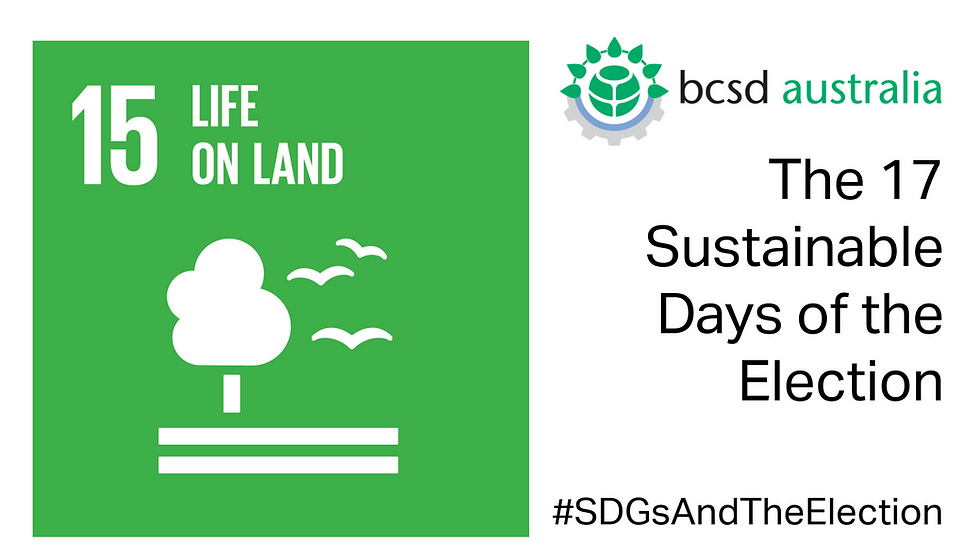SDG11: The 17 Sustainable Days of the Election
- BCSD Australia
- May 11, 2019
- 2 min read
Updated: May 27, 2019
Through the lens of the UN Sustainable Development Goals (SDGs), over the 17 days leading up to the Australia’s national election we will be highlighting the challenge for an inclusive and sustainable Australia, what can be done to address the challenge and what BCSD Australia, as part of a global WBCSD network is doing to create impact.
On Day 11, we are looking at SDG11: Sustainable cities and communities

On this issue Australia is not doing especially well compared to its peers with housing costs and homelessness being relatively high. Jobs are well-distributed across major cities but the central business districts contain about 15 per cent of all jobs, which are growing relatively quickly and contain a disproportionate share of high-productivity jobs. As a result, Australia’s dwelling density remains very low, with people on the lowest incomes increasingly being pushed to the urban fringes.
These people are faced with long commutes to jobs and services, car dependency and social isolation. And these difficulties only increase with distance: for example, women with children are less likely to have full-time employment the further they live from a city centre. As well, where businesses can collocate is affected by planning rules that guide the availability of land for businesses and the homes of the people that work in the businesses.
Land-use planning policies are arguably the biggest policy lever for governments to boost economic growth:
Geography matters a lot to economic growth. An advanced economy like Australia is dominated by services industries, which often benefit from collocation and tend to concentrate in major cities.
Planning systems across Australia play an important role in managing the growth of cities. Land-use planning rules need to set out how competing land uses should be managed to coordinate the provision of infrastructure and to minimise the costs that some land users impose on their neighbours – such as pollution, noise, congestion or poor design.
Medium density dwellings in established suburbs needs to be scaled up.
Although cars remain the dominant mode of transport in Australia, investment in public transport has seen car use fall by 5% since 2000, while rail transport has increased by 8%. This needs to be accelerated.
Expand the stock of social housing, but target it at people at greatest risk of becoming homeless.
What is BCSD Australia doing to create impact to address these challenges?
We are working with a number of partner organisations on projects that will help to address this challenge here in Australia and around the world, including:
Follow us on Twitter and LinkedIn to see our latest posts on #SDGsAndTheElection each day.




Comments